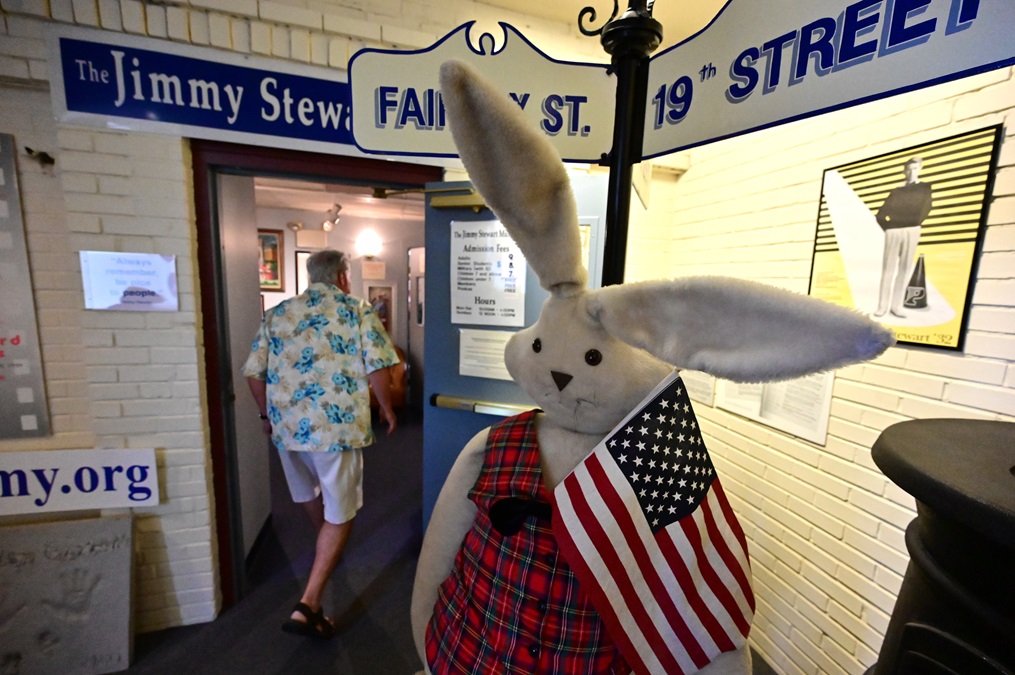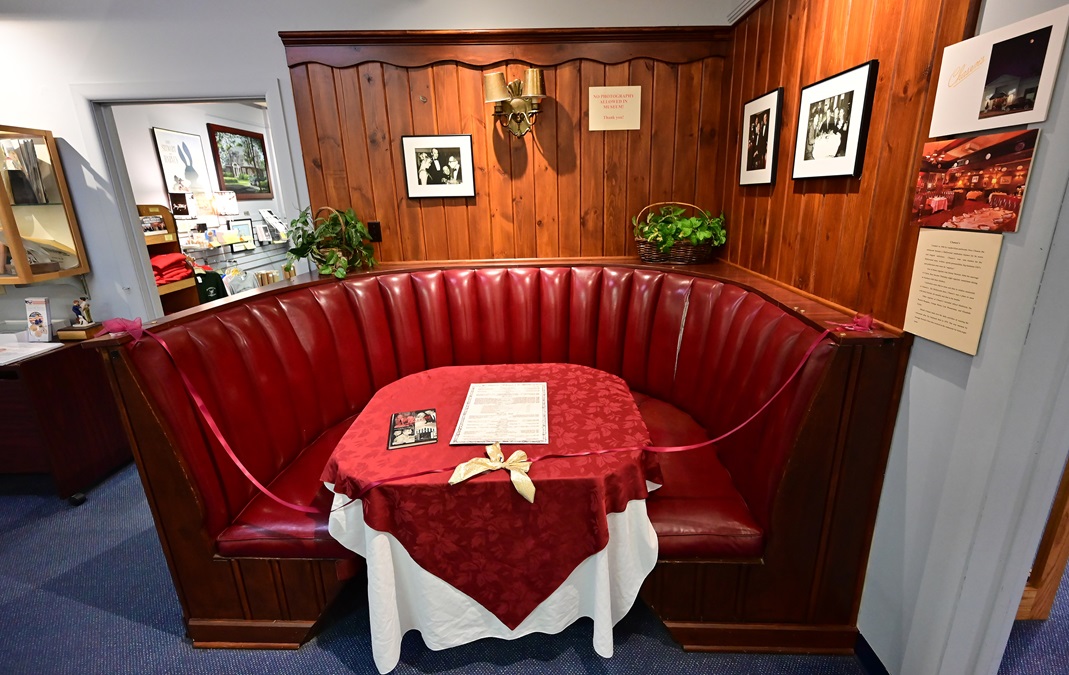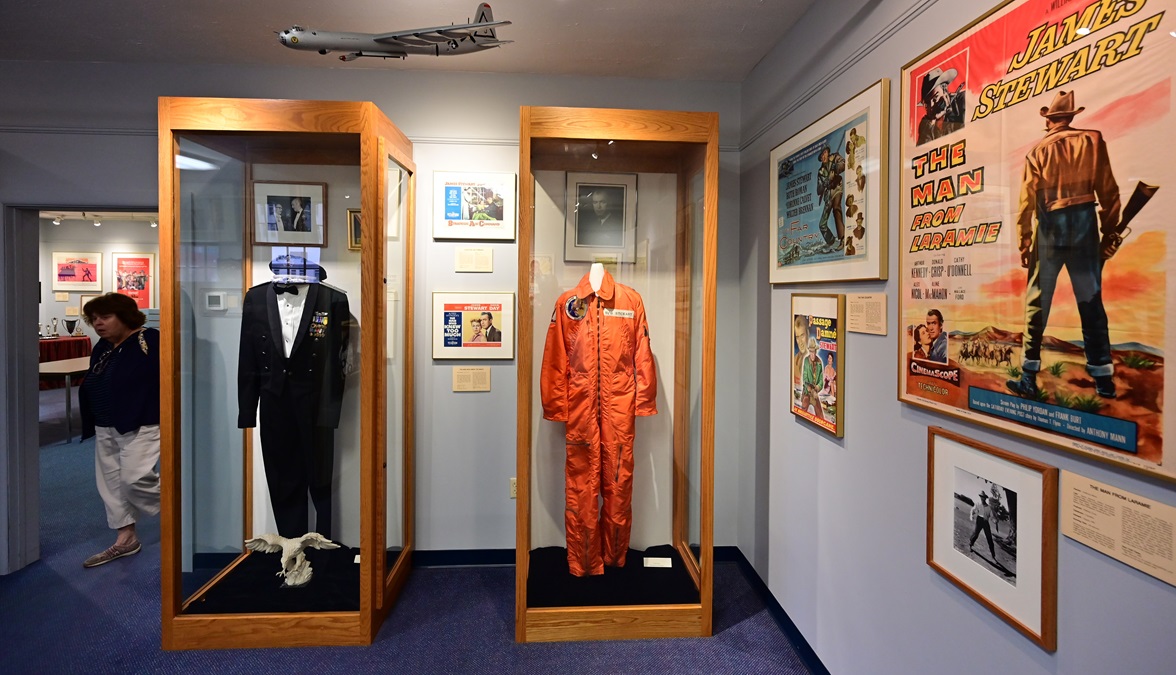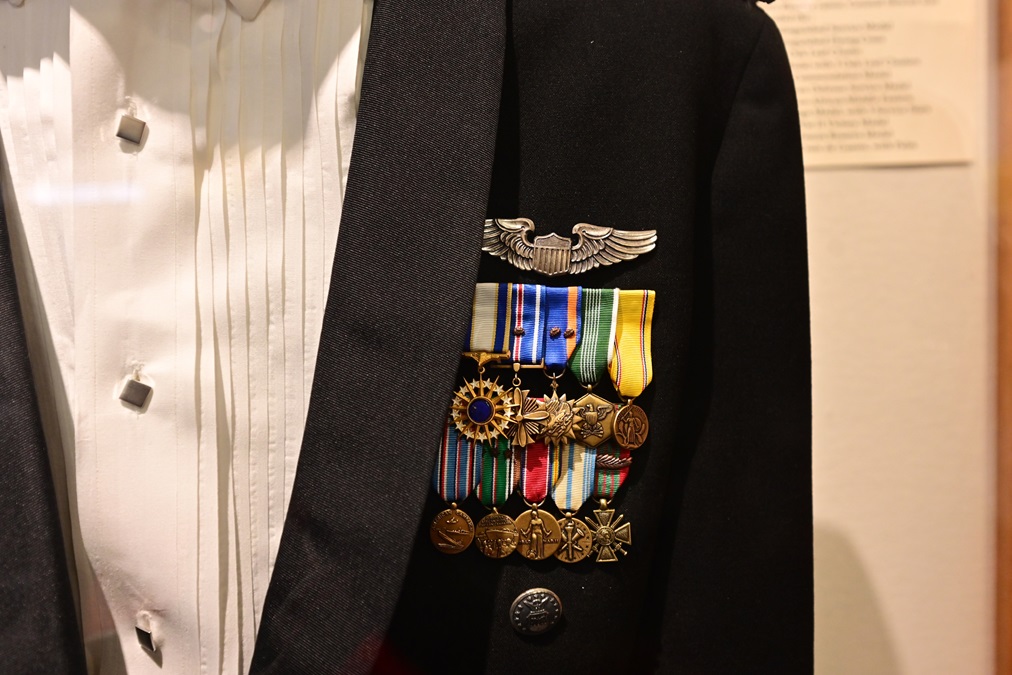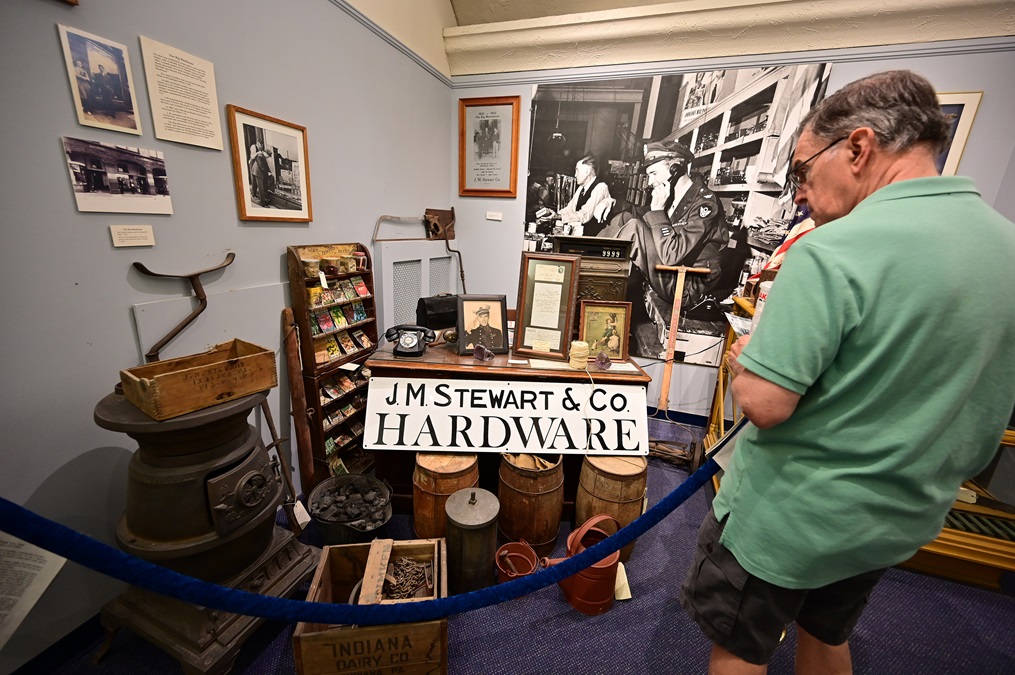‘Jimmy’ Stewart’s Cessna 310 points the way to Pennsylvania airport
Nearby museum memorializes decorated World War II aviator, GA pilot, ‘everyman’ actor
World War II bombardier instructor, general aviation pilot, and actor James M. “Jimmy” Stewart’s restored Cessna 310 now points the way for pilots landing at Indiana County/Jimmy Stewart Field in Pennsylvania, the gateway to a treasure trove of Stewart memorabilia.
The cream-and-white twin-engine’s nose and rotating wind-driven propellers help pilots choose between Runway 11 and 29 as the aircraft swings on a weathervane pedestal outside the public airport terminal.
In 2015 the faded, swept-tail “tuna tank” model was located in Texas, minus its engines.
Experimental Aircraft Association Chapter 993 members Ivan Stefanik, Harold Wood, Tip Ruffner, Keith Rearick, Sean Feullner, and Bob Neese relocated the airplane to Pennsylvania. A volunteer EAA crew put 6,500 hours into an extensive exterior restoration and shored up spars for the display monument and weathervane idea. The restoration crew watched carefully as the 1961 Cessna 310F was towed on its own gear past the Jimmy Stewart Museum. It was hoisted onto the airport display pedestal September 2.
“He bought this airplane brand new. Even Stewart being who he was, he bought it on payments,” said instrument-rated private pilot Tom Kitchen, a volunteer restorer. Kitchen said residents remember Stewart as “just a very personable guy” and when the whereabouts of the long-lost airplane became known, local aviators jumped at the chance to preserve its history.
“We decided to make it weathervane into the wind, and let the propellers spin in the wind,” Kitchen explained. “Part of my task was making it pivot. An engineer helped design it so it would meet the 100-mph wind criteria” common to other airport structures. “The airplane is tilted 15 degrees in a slight bank for aesthetics and the nav lights come on at night.”
The group had difficulty separating pieces of the aircraft for restoration because of extensive corrosion. “It took five years to take it apart, restore it, paint it, and put it up. But we had a lot of volunteers and a lot of help. Our airport is extremely proactive. It’s a very conscientious group,” Kitchen added.
The airplane is the first thing people see when they drive by the airfield, so it attracts pilots and nonpilots alike. “It’s not uncommon to see a half a dozen people a day stop, take photos, and look around,” said Kitchen. “It really is an attraction.” He said future plans call for a children’s playground and a pavilion for family gatherings.
Jimmy Stewart Museum
When it comes to aviation, the actor was the real deal. He earned his military chops during 20 World War II missions, served as a bombardier instructor for Boeing B–17 Flying Fortresses and Consolidated B–24 Liberators, and was awarded the Distinguished Flying Cross and an Air Medal among his many other military medals and accomplishments.
During the war, military leaders leveraged Stewart’s silver screen persona for a recruitment film. He spoke passionately about his “favorite subject, the Army Air Forces,” and persuaded others to follow his footsteps to military aviation. “This war we’re fighting … is a war of the air,” Stewart, a member of the U.S. Army Air Corps, said in the training film Winning Your Wings. “The whole world knows that. … Interceptors, pursuit ships, light bombers, medium bombers, and Flying Fortresses are rolling out of those factories. Sixty-five thousand fighting planes this year, 100,000 fighting planes next year, and to keep ‘em flying, 2 million men. Now, now, that’s where you come in,” he implored. “The Army Air Forces need 15,000 captains, 40,000 lieutenants, 35,000 flying sergeants. Well … how about it?” he asked.
During a night training flight when he was a co-pilot, Stewart guided a four-engine aircraft to a safe landing after one engine caught fire, exploded, and sent shrapnel into the cockpit, knocking out the pilot. After a shell burst in the belly of a B–24 during a mission over Germany, Stewart guided the damaged Liberator back to base, where it buckled and “cracked open like an egg” upon landing, though nobody was hurt, according to HistoryNet.
After the war ended, Stewart served in the U.S. Air Force Reserve and rose to brigadier general.
Stewart returned to the screen in the holiday classic It’s a Wonderful Life but was nervous about performing his first on-screen kiss since the war, IMDb noted. He hadn’t lost his touch and completed the scene in one unrehearsed take.
The Jimmy Stewart Museum in downtown Indiana, which displays his aviation and personal effects, notes that Stewart was fascinated with aviation even as a young man. He earned his pilot certificate with wages from working at the family’s hardware store near his boyhood home. Aviation then led him to a Princeton University architectural degree with a thesis on airport design.
The commercial pilot with multiengine privileges, Presidential Medal of Freedom recipient, and Oscar winner flew his family in GA aircraft that included a single-engine Stinson 105 and two Cessna 310s.
Plaques of a Consolidated B–24 Liberator and a Boeing B–52 Stratofortress share Stewart’s re-created desk space at the museum with a sculpture of him in airman’s goggles presented to the aviator by the 20th Bombardment Squadron Buccaneers. Aviation paraphernalia abounds, including appreciation awards, U.S. Air Force uniforms with military awards and decorations, an orange flight suit, and a propeller autographed by the cast and crew of The Flight of the Phoenix.
He was married to Gloria Hatrick McLean and had four children. The museum’s website says Stewart was known as “the movies’ quintessential everyman” because of his easygoing persona. He was born in the small central Pennsylvania town in 1908 and died in California in 1997.
Stewart was honored by Congress after his death with a reading that said in part, “As an actor, as a citizen, and in his personal life, Jimmy Stewart exemplified the best of America.”
He couldn’t attend the museum’s 1995 grand opening, so he sent a letter instead. It read, “Entering a building which houses a museum named after me is a privilege I could never have anticipated. I hope its visitors will enjoy their stay there. After all, they are the ones who really built it.”



